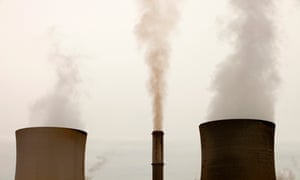Extract from The Guardian
Annual carbon emissions, excluding unreliable data, higher than ever, report says
Australia’s emissions over the past year were again the highest on
record when unreliable data from land use and forestry sectors are
excluded, according to new data from NDEVR Environmental.
If the country’s greenhouse gas emissions continue on their current trajectory, Australia will miss its Paris target by a billion tonnes of CO2, which is equal to about two years of Australia’s entire national emissions.
NDEVR replicates the federal government’s National Greenhouse Gas Inventory (NGGI) quarterly reports, but releases them months ahead of the official data. Previous NDEVR reports’ figures have been within 1% of the official figures when they are eventually released.
The latest figures include the first three months of 2018 and show Australia’s national emissions up to March were the highest since records began in 2002.
It projects that emissions for the year to March, excluding land use emissions, will be 556.9 m tonnes.
Even with land-use data included, it projects emissions would continue their upward trend, taking Australia further away from its Paris commitment of a 26% to 28% reduction in emissions on 2005 levels by 2030.
Although emissions from the electricity sector had fallen in the previous three quarters, the report identifies a slight increase of 1.7 m tonnes of CO2 in the most recent quarter, due to an increase in fossil-fuel based electricity generation throughout the national electricity market states.
The report also finds that fugitive emissions due to increased gas production and exports are at their highest levels ever.
As debate over the government’s proposed national energy guarantee continues, NDEVR projects that the Australian electricity sector would meet the proposed Neg target of a 26% cut on 2005 levels by 2030, five years ahead of schedule, simply if business as usual continues.
The reason for this is the ongoing investment in renewable energy developments as well as the impending decommissioning of large coal plants.
“Our indicative analysis shows that electricity emissions in a business as usual sense are decreasing faster than what the Neg projects anyway,” the NDEVR environmental managing director, Matt Drum, said.
Drum said while the government’s focus was on the electricity sector, emissions were rising across other areas of the economy in the absence of a working climate policy.
“The numbers speak for themselves. They’re heading in the wrong direction,” he said.
“It’s one thing to focus on the electricity sector – it’s 36% of our emissions. But that leaves 64% of the economy that is essentially untouched by policy or mitigation.”
If the country’s greenhouse gas emissions continue on their current trajectory, Australia will miss its Paris target by a billion tonnes of CO2, which is equal to about two years of Australia’s entire national emissions.
NDEVR replicates the federal government’s National Greenhouse Gas Inventory (NGGI) quarterly reports, but releases them months ahead of the official data. Previous NDEVR reports’ figures have been within 1% of the official figures when they are eventually released.
The latest figures include the first three months of 2018 and show Australia’s national emissions up to March were the highest since records began in 2002.
It projects that emissions for the year to March, excluding land use emissions, will be 556.9 m tonnes.
Even with land-use data included, it projects emissions would continue their upward trend, taking Australia further away from its Paris commitment of a 26% to 28% reduction in emissions on 2005 levels by 2030.
Although emissions from the electricity sector had fallen in the previous three quarters, the report identifies a slight increase of 1.7 m tonnes of CO2 in the most recent quarter, due to an increase in fossil-fuel based electricity generation throughout the national electricity market states.
The report also finds that fugitive emissions due to increased gas production and exports are at their highest levels ever.
As debate over the government’s proposed national energy guarantee continues, NDEVR projects that the Australian electricity sector would meet the proposed Neg target of a 26% cut on 2005 levels by 2030, five years ahead of schedule, simply if business as usual continues.
The reason for this is the ongoing investment in renewable energy developments as well as the impending decommissioning of large coal plants.
“Our indicative analysis shows that electricity emissions in a business as usual sense are decreasing faster than what the Neg projects anyway,” the NDEVR environmental managing director, Matt Drum, said.
Drum said while the government’s focus was on the electricity sector, emissions were rising across other areas of the economy in the absence of a working climate policy.
“The numbers speak for themselves. They’re heading in the wrong direction,” he said.
“It’s one thing to focus on the electricity sector – it’s 36% of our emissions. But that leaves 64% of the economy that is essentially untouched by policy or mitigation.”

No comments:
Post a Comment